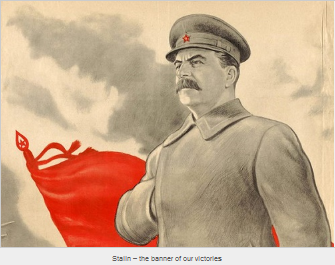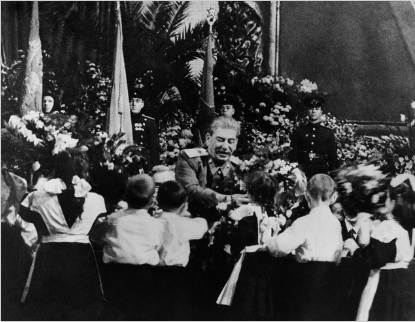
#Bihac, #Bosnia migrant camp
#Banksy
#Baseball,Ty Cobb and chemical weapons
Jackie #Kennedy and the horse from Pakistan
#Belarus waits for Biden
#Lemurs
#NewYear’s resolution: support your local birds
A Cold Warrior’s advice on dealing with #Russia look.substack.com/p/eight-things…
#Banksy
#Baseball,Ty Cobb and chemical weapons
Jackie #Kennedy and the horse from Pakistan
#Belarus waits for Biden
#Lemurs
#NewYear’s resolution: support your local birds
A Cold Warrior’s advice on dealing with #Russia look.substack.com/p/eight-things…
1. If you look at Banksy’s art with the same set of eyes that you would use on a Monet garden scene or an Edward Hopper painting, you won’t get it. 



2. If you see Banksy’s work as social commentary, however, then it makes perfect sense. Art is simply the medium Banksy uses to have a word with the world, as he did in the “crude oil” style painting he entitled Monkey Poison. 

3. Banksy aficionados are especially enamored with his “crude oils.” To make them, Banksy takes an existing, old oil painting, then duplicates the scene by painting in oils on top of it. [His “old masters” style of brushwork is said to be quite fine.] 

4.Banksy then adds a stenciled, spray-painted comic figure — often a chimpanzee — on top of the oil painting in a crude juxtaposition with the underlying scene. The dissonance these clashing images creates is Banksy’s social commentary. 
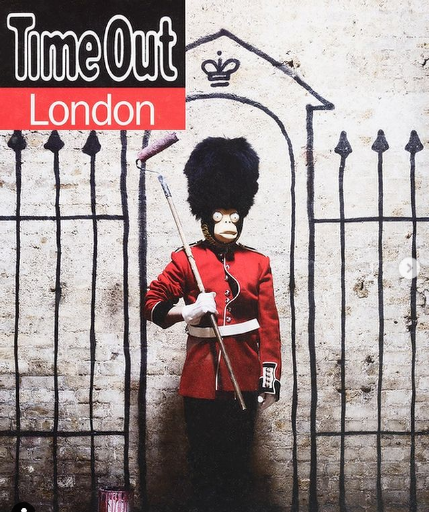
5. Monkey Poison offers a master-class in “art as social commentary.” Here we see a silly chimp, mindlessly guzzling oil from an oil can and looking ready to spit on the idyllic, pastoral scene below. 

6. Banksy’s message? We are silly, unthinking creatures who are ruining the world with our addiction to oil.
Agreed. But, there is an irony here: Banksy has grown wealthy and influential by using art to criticize the very system that has brought him fame and fortune.
Agreed. But, there is an irony here: Banksy has grown wealthy and influential by using art to criticize the very system that has brought him fame and fortune.

7. Does Banksy appreciate this irony?He does. About ten years ago, Banksy told the New Yorker, by email, “I love the way capitalism finds a placeeven for its enemies. It’s definitely boom time in the discontent industry.”Which brings us back to Monkey Poison.
[Scar of Bethlehem]
[Scar of Bethlehem]

8.Monkey Poison was owned for several years by a private Amsterdam museum that displays modern, contemporary and street art — Banksy’s style of art. But the museum, like so many others, fell on hard times this year with plummeting revenues as a result of covid lockdowns. 

9. Facing insurmountable financial difficulties, the museum owner reluctantly decided to sell Monkey Poison rather than lay off staff. The owner tells a poignant story of gathering twenty staff members around her to stand in front of Monkey Poison and say goodbye to the painting. 

10. The auction was on July 2 and there was just one bid; but it was a nice one. The museum received $2,136,000 USD for Monkey Poison, less selling fees, an amount sufficient to retain everyone on the museum’s payroll. 
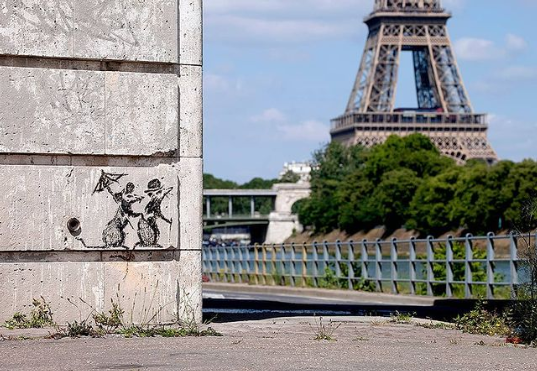
11. But recently the new owner of Monkey Poison sent an email to the museum. The email said that the new owner is willing to let the museum keep the painting on display for “at least a year.” 

13.This story came from the latest edition of Eight Things To Know.
There are 7 others.
Each story illuminates a pressing issue with background info and some history.
If you like this style of non-clickbait journalism, become an Eight Things subscriber->look.substack.com
There are 7 others.
Each story illuminates a pressing issue with background info and some history.
If you like this style of non-clickbait journalism, become an Eight Things subscriber->look.substack.com

14.For the past week, 3,000 people have been living rough in the forests and abandoned shanties of northwest Bosnia, near the little town of Bihac. Most have come there from Afghanistan, Pakistan, Syria and Africa. 

15. Croatia — an EU country — lies on the other side of the Drina River; and there lies the dream of safety and economic opportunity that has empowered their arduous journeys. 

16. The townspeople in Bihac are not pleased with their status as a refugee center. They have cooperated, to a limited extent, with the work of the UN migration agency in setting up temporary tent facilities to shelter the migrants... 

17.but have balked at connecting these facilities to water and electricity lines or making them suitable for Bosnia’s winter.Even this limited cooperation has angered some local residents. The people of Bihac have long argued that UN camps attract unwanted migrants to the region. 

18.Local people have blocked roads to impede UN buses carrying migrants to and fro. Vigilante groups have engaged in migrant attacks. The local police have turned a blind eye to these attacks and the police have sometimes been involved. 

19. It has been like this since Hungary installed an electrified fence across its border, sealing off the previous route migrants took to reach Europe. In the past three years, tens of thousands of migrants have passed through Bosnia. 

20. These migrants have little in common with their Bosnian hosts other than traumatic memories of war.
Bosnia has never recovered from the 1992-1995 war in the former Yugoslavia that killed 100,000 people and forced 2.2 million from their homes.
Bosnia has never recovered from the 1992-1995 war in the former Yugoslavia that killed 100,000 people and forced 2.2 million from their homes.

21. Bosnia is a place riven with ethnic divisions. Bosnia has a broken economy and shattered infrastructure. Half of its population suffers psychological trauma from the war. 

22.Bosnia’s central government is ineffective. Political power rests in local governments, including the local officials of Bihac. The situation with theAsian/African migrants there came to a breaking point just before Christmas. 

23. Temperatures plunged and the temporary shower and toilet facilities in the UN tent camp froze. Local Bihac officials refused to to remedy the sanitation problem and reiterated their refusal to make the camp suitable for winter conditions. 

24. The UN people, frustrated at days of fruitless negotiations with city officials, ordered the broken tent camp closed. They demanded that local officials arrange for temporary accommodations for the displaced migrants elsewhere so that needed repairs at the camp could be made. 

25.When camp residents were told of the camp closure, several of them pulled together three tents and lit them on fire. What little was there is now gone; and the UN believes that 3,000 people, including women and children, are now left out in the cold. 

26. The UN representative said, “This is a nightmare scenario: these people should be inside in warm conditions, just as the rest of Europe is doing at this holiday time.” 

27.This story came from the latest edition of Eight Things To Know.
There are 7 others.
Each story illuminates a pressing issue with background info and some history.
If you like this style of non-clickbait journalism, become an Eight Things subscriber->look.substack.com
There are 7 others.
Each story illuminates a pressing issue with background info and some history.
If you like this style of non-clickbait journalism, become an Eight Things subscriber->look.substack.com

28.Who among us could imagine an American baseball legend proudly volunteering to serve his country by becoming a chemical weapons instructor? These are words that don’t belong in the same sentence; yet that is what Ty Cobb and several other baseball hall-of-famers did in 1918. 

30. It was the French who initiated chemical weapons use in the war and Germany soon followed. Both started out with tear gas, but tear gas proved to be a poor battlefield weapon. It dispersed quickly and caused only temporary blindness and breathing difficulties. 

31.Something stronger, and lethal, was required; and all combatants, eventually even the US, worked to develop chlorine, phosgene and mustard gas as field weapons.
Germany got there first.
Germany got there first.

32. In April 1915, German troops who were dug into a defensive line near Ypres, Belgium, sent 6,000 canisters of chlorine gas into the trenches of French and Algerian forces opposing them. 

33.Blinded and coughing soldiers ran wildly from the battlefield, their faces purple and chests heaving for air. Even the vegetation in the field shriveled when the yellow gas settled on the ground. The gas killed 1,000 men and injured 4,000 more. 

34. When the US entered the war in 1917, General Pershing, the commander of US forces in France, wanted the US to develop its own chemical weapons capability. A poison gas research center was established at the Washington, DC, campus of American University. 

35. The Army created a Chemical Warfare Service in June 1918.
Maj. Gen. William Sibert, a military engineer who had gained prominence for solving difficult problems in the construction of the Panama Canal, was given command of the Chemical Warfare Service.
[Panama Canal]
Maj. Gen. William Sibert, a military engineer who had gained prominence for solving difficult problems in the construction of the Panama Canal, was given command of the Chemical Warfare Service.
[Panama Canal]

36. In addition to overseeing weapons & gas mask development Sibert sought an elite corps of renowned athletes to serve in leadership roles in its Gas & Flame Division. Several hall-of-famers, including Christy Mathewson Branch Rickey, George Sisler and Ty Cobb, answered the call 

37. The division was charged with advancing across no-man’s land under cover of an artillery barrage. As they advanced, the men would spray liquid flames from tanks strapped to their backs and toss gas-filled bombs into enemy trenches. 

38.Part of the unit’s training involved realistic readiness drills. The men were required to enter an air-tight chamber, then await a signal to strap on their gas masks as poison gas began to fill the chamber. 

39. During one of these drills, several men missed the gas mask signal and breathed in the poisonous gas. Cobb later described the scene as utter chaos, as men screamed and thrashed in a tangle of bodies on the floor. 
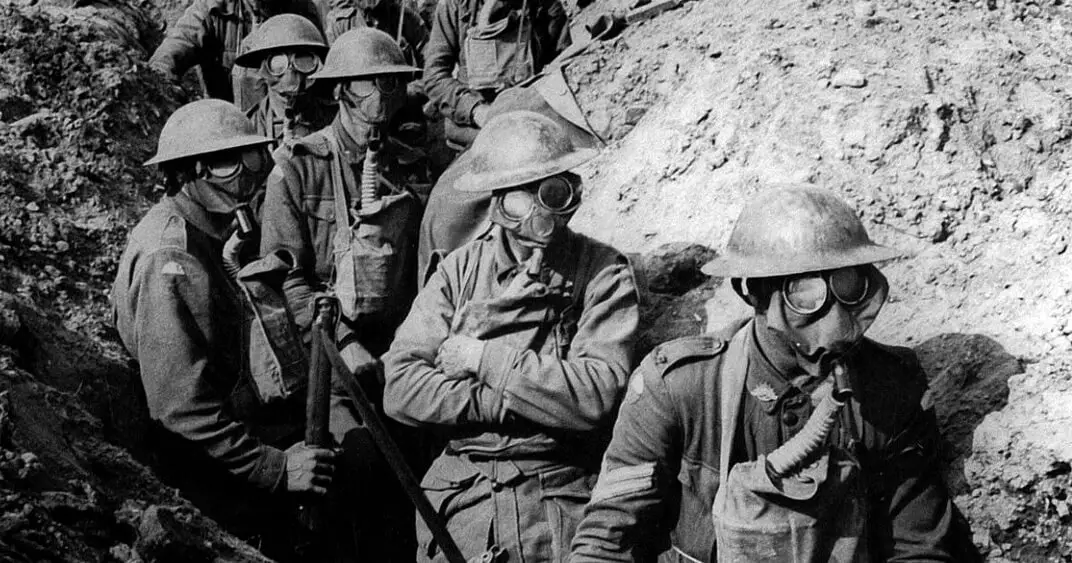
40Cobb managed to snap on his gas mask and evacuate the chamber, but eight men died from breathing the poisonous gas and eight more were crippled for several days. One of the injured was Mathewson, who struggled with tuberculosis for the next seven years until his death in 1925. 

41.The training accident did not derail the US chemical weapons operation in the war. 630 officers and 2,800 enlisted men from the Chemical Warfare Service would see action in France during the summer and fall of 1918. 

42.Their most prominent engagement was during the Meuse-Argonne offensive. In that battle, troops from the Chemical Warfare Service used phosgene gas and mustard gas against German troops, delivering it in mortar gas shells, gas drums filled with explosives& smoke/thermite bombs. 

43. When the war ended, Cobb was able to leave France on one of the first transport ships returning to the US. He had served overseas for 67 days. Cobb returned to baseball and played for another ten years. Few biographies mention his chemical warfare service. 

44.The Geneva Gas Protocol — the first international treaty that banned the use of chemical and biological weapons in war — was signed in 1925. Christy Mathewson died four months later. 

45.This story came from the latest edition of Eight Things To Know.
There are 7 others.
Each story illuminates a pressing issue with background info and some history.
If you like this style of non-clickbait journalism, become an Eight Things subscriber->look.substack.com


There are 7 others.
Each story illuminates a pressing issue with background info and some history.
If you like this style of non-clickbait journalism, become an Eight Things subscriber->look.substack.com



46. When First Lady Jackie Kennedy arrived in Lahore, Pakistan, on March 21, 1962, the day was declared a national holiday.
[trip to Mexico City]
[trip to Mexico City]

47.She stood alongside Pakistan President Mohammad Ayub Khan, in an open Cadillac convertible for the ride into town, just as Queen Elizabeth had done during her visit to Pakistan the year before; and like then, the people who lined the streets threw flower petals and bouquets. 

48. Mrs. Kennedy was on the second leg of a two-week goodwill tour that had first taken her to India — a trip that had been suggested by the US Ambassador to India, John Kenneth Galbraith.
[with Galbraith in India]
[with Galbraith in India]

49. Mrs. Kennedy was accompanied by her sister, Lee Radziwill; and that she traveled without the President, as his emissary, put her in the company of Eleanor Roosevelt — a First Lady who had done the same. 



50.Pakistan had been created out of the Indian subcontinent in 1947.The US had been among the 1st to recognize it as an independent country. Pakistan had quickly become an important American ally, strategically located in S. Asia among nations shaking off the yoke of colonialism. 

51.The Soviet Union was Pakistan’s neighbor to the north. It had industrial development agreements with Pakistan dating from the 1950s and was intent on gaining more influence there. 

52. The ill-fated U-2 flight of Francis Gary Powers on May 1, 1960, had originated from a military air base in Pakistan that had been recently upgraded with US funds.The U-2 shoot-down had laid bare the extensive military cooperation that then existed between the US and Pakistan. 

53. President Kennedy was intent on preserving this strategic relationship and thwarting the Soviet effort to achieve regional dominance. The courting of Pakistan’s President Khan began early in the Kennedy administration, with his state visit to the US in July 1961. 

54. On his state visit, President Khan was the guest of honor at an elaborate dinner hosted by Mrs. Kennedy on the East Lawn of Mount Vernon. French cuisine, prepared at the White House and shipped the 18 miles south to Mount Vernon, was served under yellow tents. 

55. Dinner guests were ferried down the Potomac River in yachts. Evening entertainment was provided by the National Symphony Orchestra. 





56. It was during this 1961 state visit that the Pakistani president and Mrs. Kennedy learned of their shared loved of horses; and Mrs. Kennedy had taken President Khan to the Kennedy’s rented Virginia estate, to go riding. Mrs. Kennedy’s 1962 trip to Pakistan would build on this 

57. On her first full day in Pakistan, Mrs. Kennedy joined 82,000 spectators for the Pakistan National Horse and Cattle Show. While at the show, President Khan presented her with a ten-year-old gelding, named Sardar, whom she had ridden in Khan’s company the day before. 



59. At Mrs. Kennedy’s request, Sardar was flown to his new home in the US on a C-130 military transport plane. Some Republicans in Congress grumbled about the rule-breaking that had enabled the horse to travel on a US military plane... 

60...but both President/ Mrs. Kennedy made a public point of according this gift from Pakistan special privileges.Mrs. Kennedy had received many lavish gifts while on this trip, including 2 tiger cubs from India; but it was Pakistan’s gift of Sardar that received public attention 





61. Later, as Sardar arrived in Fort Myer, Mrs. Kennedy and Caroline stood alongside the horse in formal clothing for official White House photographs; and news of Sardar’s safe arrival, along with these photographs, spread around the world. 

62. Still later, Mrs. Kennedy allowed photographers to take pictures of her riding Sardar at the Kennedy Virginia estate; and these, too, made international news. 

63.Some see the tale of Sardar as little more than evidence of Mrs. Kennedy’s love of horses; but the publicity surrounding her delight with the gift, and the special government treatment the horse received, was not lost on Pakistani leadership. 

64. The intentional publicity accorded to Sardar cemented the close relationship of the US and Pakistan at an important moment during the Cold War.
Personal relationships matter.

Personal relationships matter.


65.This story came from the latest edition of Eight Things To Know.
There are 7 others.
Each story illuminates a pressing issue with background info and some history.
If you like this style of non-clickbait journalism, become an Eight Things subscriber->look.substack.com
There are 7 others.
Each story illuminates a pressing issue with background info and some history.
If you like this style of non-clickbait journalism, become an Eight Things subscriber->look.substack.com

66. Small groups of pensioners gathered in Minsk, #Belarus, Monday morning, braving high winds, snow and 31 degree temperatures to wave the red-and-white flag of the democratic opposition seeking to oust President Alexander Lukashenko from power. 

67.The passage of time, cold weather, and the govt’s violent repression of protesters have taken a toll on the opposition movement. Oppo demonstrations are now smaller and organized through the secured messaging app Telegram. The big street demonstrations of the summer are gone. 

68.Oppo leaders are in jail/exiled. Dozens of journos have been imprisoned or stripped of credentials; and news coming out of Belarus is now limited.The national strike advocated by oppo leaders has not materialized& strike organizers at state factories have been jailed or fired. 

69. Many professionals have voluntarily left the country. Promises of a handsome bounty for the handing over of Lukashenko have received no response. 

70.Russia and the Belarus security ministry have signed a new agreement to coordinate police action in response to “extremism.” The violent repression of the opposition will continue, with Russian troops, previously called “the little green men,” now openly providing assistance. 

71.The EU and US have imposed economic sanctions against Lukashenko and others in the Belarus government and issued scathing reports, but nothing has changed. 

72. A new public opinion poll of Belarus citizens, of unknown validity, claims to show a sizeable portion of the population unwilling to support the opposition movement’s call for democracy. 

73.Trump signed the “Belarus Democracy Act” into law. The Act recognizes the oppo leadership as a legitimate participant in the peaceful transfer of power. Opposition figures hailed the legislation as a positive development, but they are looking for acts, not mere words on paper. 

74. While the Act labels Lukashenko an illegitimate president and condemns the violent tactics he has used against the opposition, it will do little in the absence of concerted action from the US president. Trump has shown no interest in the Belarus crisis. 

75. In an interview yesterday morning, opposition leader Svetlana Tikhanouvskaya acknowledged the need for the US president’s personal involvement, saying “[w]e are really waiting for Biden.” 

76. This weekend, members of the opposition announced they have received leaked documents that show a Russian effort to create a new, right-wing political party in #Belarus that will oppose Lukashenko, but seek integration with Russia. 
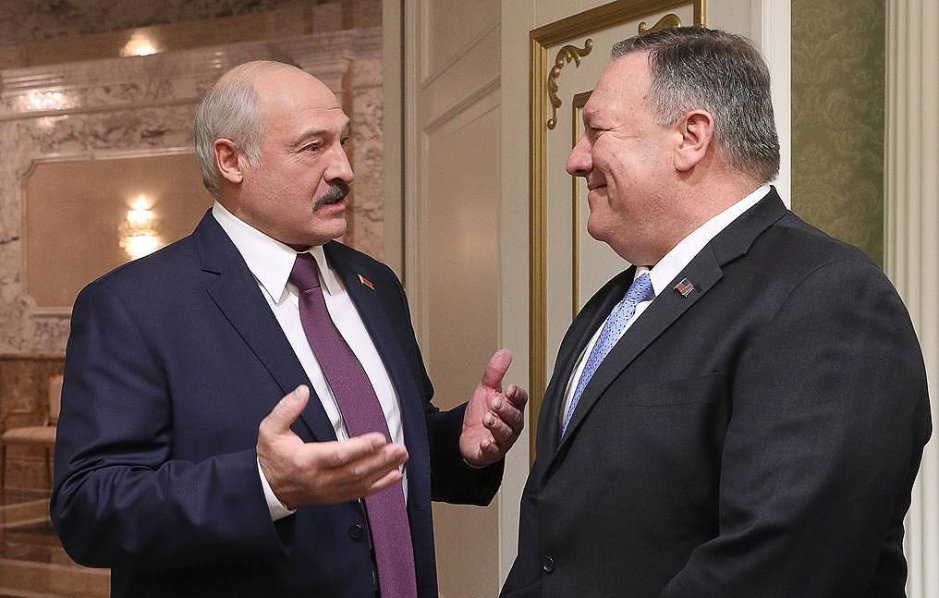
77.The newly-signed Act contains a warning that the US will refuse to acknowledge any Russian attempt to absorb Belarus into a “united state” with Russia, calling any such attempt an effort to reconstituted the “totalitarian Soviet Union.” 
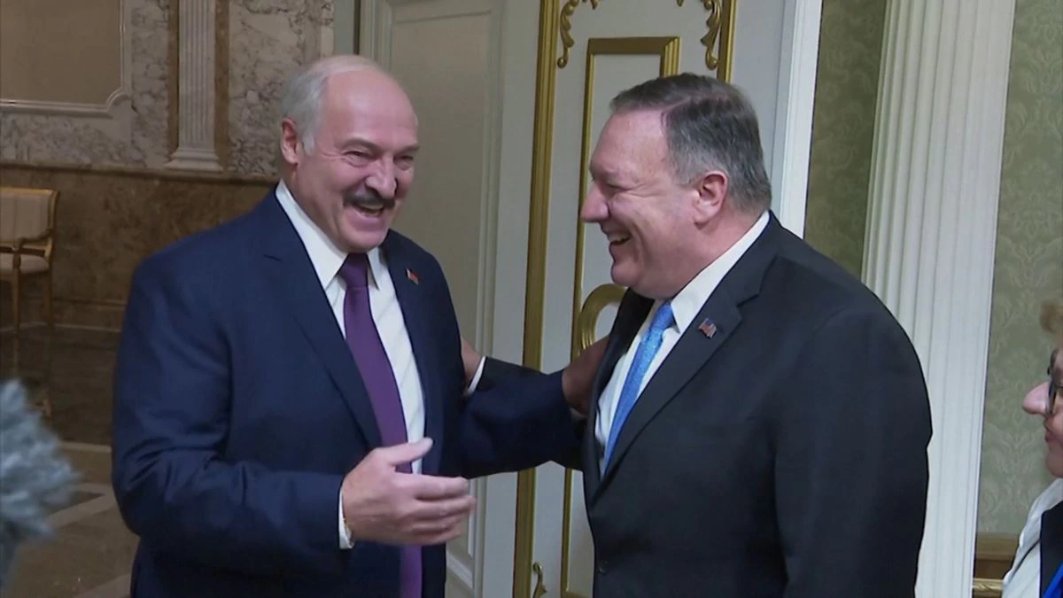
78. A reconstituted Soviet Union is Putin’s objective and #Belarus is in play.
Tikhanouvskaya is correct: all of us are really waiting for Biden.
Tikhanouvskaya is correct: all of us are really waiting for Biden.

79.This story came from the latest edition of Eight Things To Know.
There are 7 others.
Each story illuminates a pressing issue with background info and some history.
If you like this style of non-clickbait journalism, become an Eight Things subscriber->look.substack.com
There are 7 others.
Each story illuminates a pressing issue with background info and some history.
If you like this style of non-clickbait journalism, become an Eight Things subscriber->look.substack.com

8. An animal species must first be identified before its extinction risk can be evaluated, but the traditional method for species identification, based on shared physical characteristics, has long proven inadequate.
[mouse lemur/Smithsonian pic]
[mouse lemur/Smithsonian pic]

82.The classification system created by Swedish botanist Carl Linnaeus in the mid-1700s, where organisms were placed in a hierarchy of life based on their appearance, required detailed species knowledge that was routinely lost when experts died. 

83.Not everyone can identify different species of flies based on an examination of their genitalia.Scientists feared that distinct plant and animal species were becoming extinct without notice, a terrifying thought to those who appreciate the intricate interdependencies of life. 

84.Hope for better species identification came in the early 2000s when scientists developed a genetic testing protocol called DNA barcoding. This technique examines a bit of DNA material, allowing different species to be identified using their genetic divergence. 

85. It’s like the Linnaeus classification system, but on a microscopically fine scale.
The past fifteen years of DNA barcoding has made it clear that the world contains much more biodiversity than was previously believed.
The past fifteen years of DNA barcoding has made it clear that the world contains much more biodiversity than was previously believed.

86.But discovering new, distinct species that were once considered common and widespread has raised a new set of worries. These newly identified distinct species may be endangered and require protection.
[Duke U.]
[Duke U.]

87. Such is the case with the Jonah’s mouse lemur, a 2-ounce primate who lives in northeastern Madagascar. The Jonah’s mouse lemur, discovered this past summer, is the 25th recognized species of mouse lemur. 

88.While it is wonderful to discover a new animal, scientists believe there are only 200 Jonah’s mouse lemurs in existence. They are threatened with habitat loss due to the rapid encroachment of the local human population. 

89. So now people are rushing to save this tiny little guy, and I’m all for it.
The more we learn, the more we worry; but, in Nature, knowing what we have is the first step in keeping it.
The more we learn, the more we worry; but, in Nature, knowing what we have is the first step in keeping it.

90.This story came from the latest edition of Eight Things To Know.
There are 7 others.
Each story illuminates a pressing issue with background info and some history.
If you like this style of non-clickbait journalism, become an Eight Things subscriber->look.substack.com
There are 7 others.
Each story illuminates a pressing issue with background info and some history.
If you like this style of non-clickbait journalism, become an Eight Things subscriber->look.substack.com

• • •
Missing some Tweet in this thread? You can try to
force a refresh









